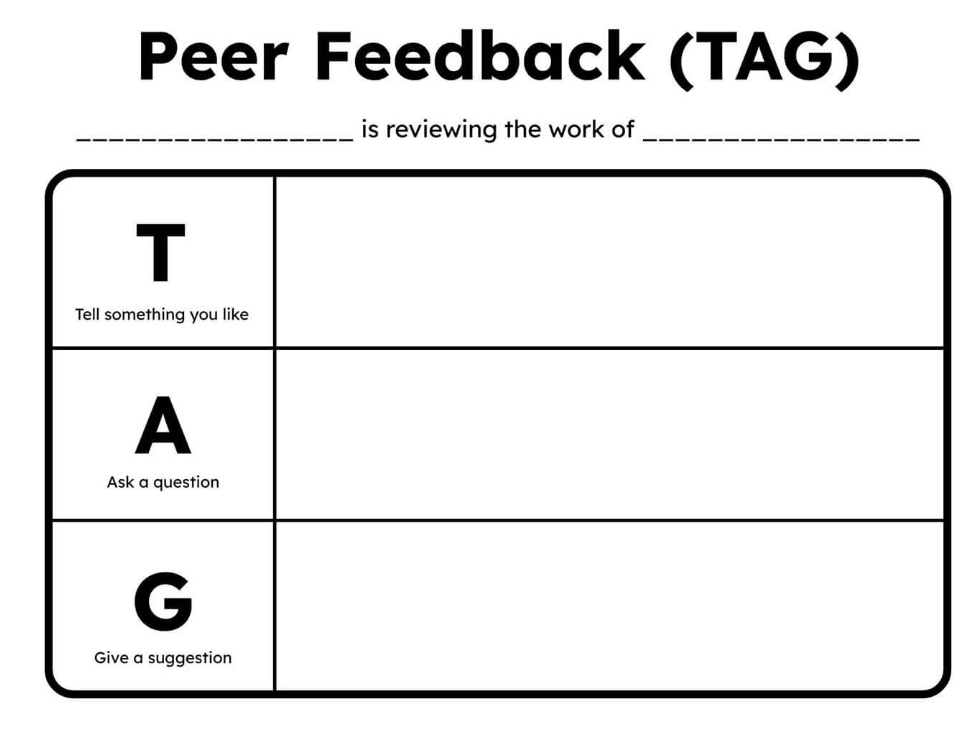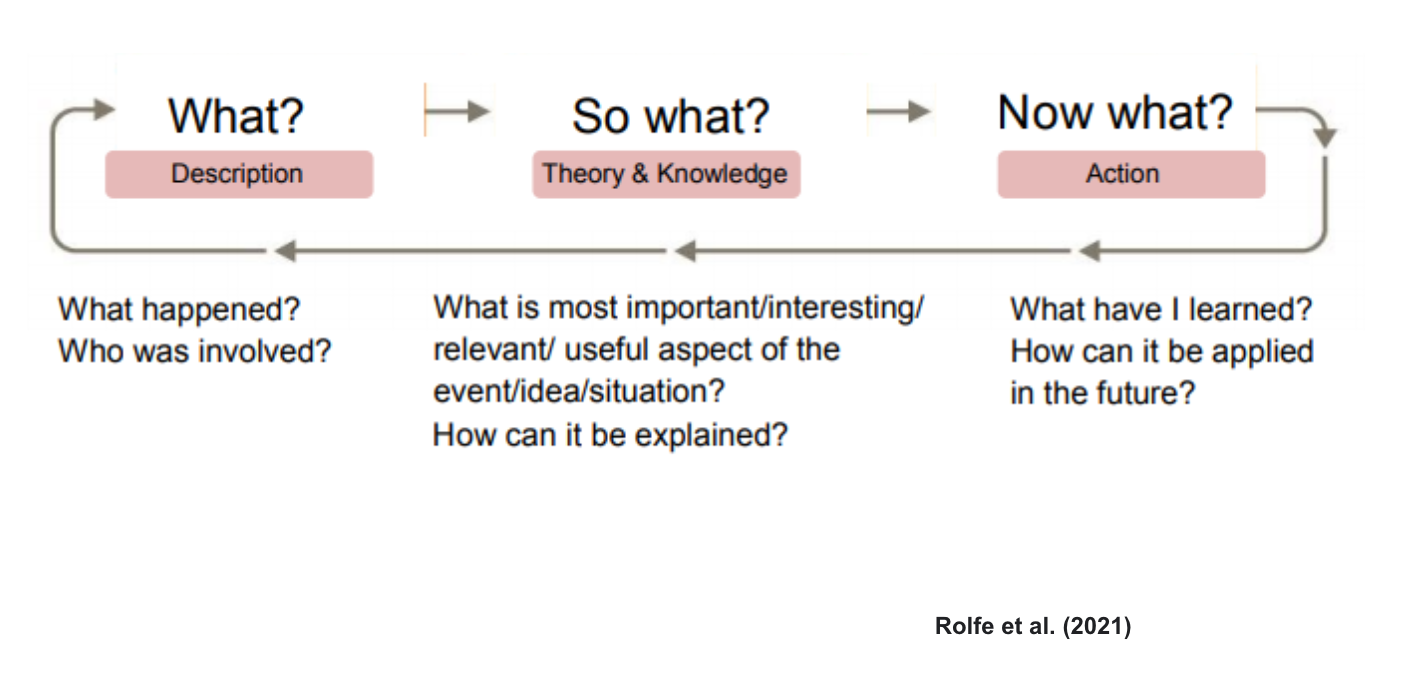"2023-09-19"
# Practice Teaching
#EDUC130_3 #education #teaching
# When are you most engaged?
When I think of engagement, there is this concept that comes to mind to me called flow. Psychologist Mihalyi Csikszentmihalyi defines this as “a state in which people are so involved in an activity that nothing else seems to matter; the experience is so enjoyable that people will continue to do it even at great cost, for the sheer sake of doing it”. He says it can be accessed in the sweet spot between boredom and anxiety, as displayed by the chart below. To induce flow, an activity shouldn’t be too easy to the point that the student is bored, nor too hard to the point it makes the student anxious.

In my case, I feel most engaged whenever I’m learning physically challenging skills. One of my hobbies is going to adult gymnastics classes, where I’ve been working on skills such as walkovers and aerials. I definitely don’t get bored during these classes because of how challenging they are. Thankfully, they’re not too difficult for my skill level thanks to coaches who make sure to provide accessible progressions. These progressions make skills seem more doable.
# Engagement Defined
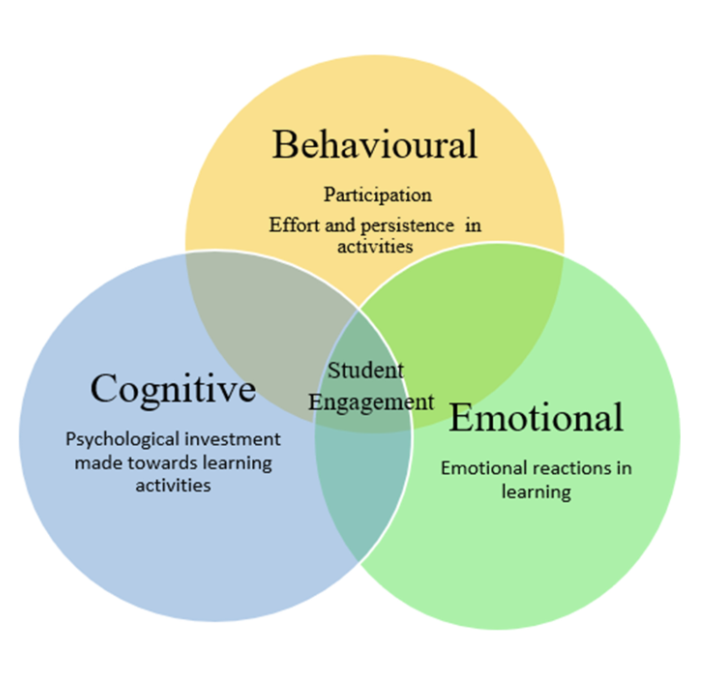
According to Nkomo, Daniel & Butson (2021) student engagement consists of three dimensions:
- Behavioral: Participation, effort and persistence in activities
- Cognitive: The psychological investments made by the learner in the activities
- Emotional: The emotional reactions in learning or towards the activities or experiences
# Fostering Cognitive Engagement: The ICAP Hypothesis
- Michelene T. H. Chi & Ruth Wylie (2014) proposed the Cards/ICAP hypothesis.
- It predicts that ==as students become more engaged with the learning materials, from passive to active to constructive to interactive, their learning will increase. ==
- What does ICAP mean? ICAP stands for ==Interactive, Constructive, Active and Passive.==
- The descriptions for each classification of activity are shown below along with some examples.
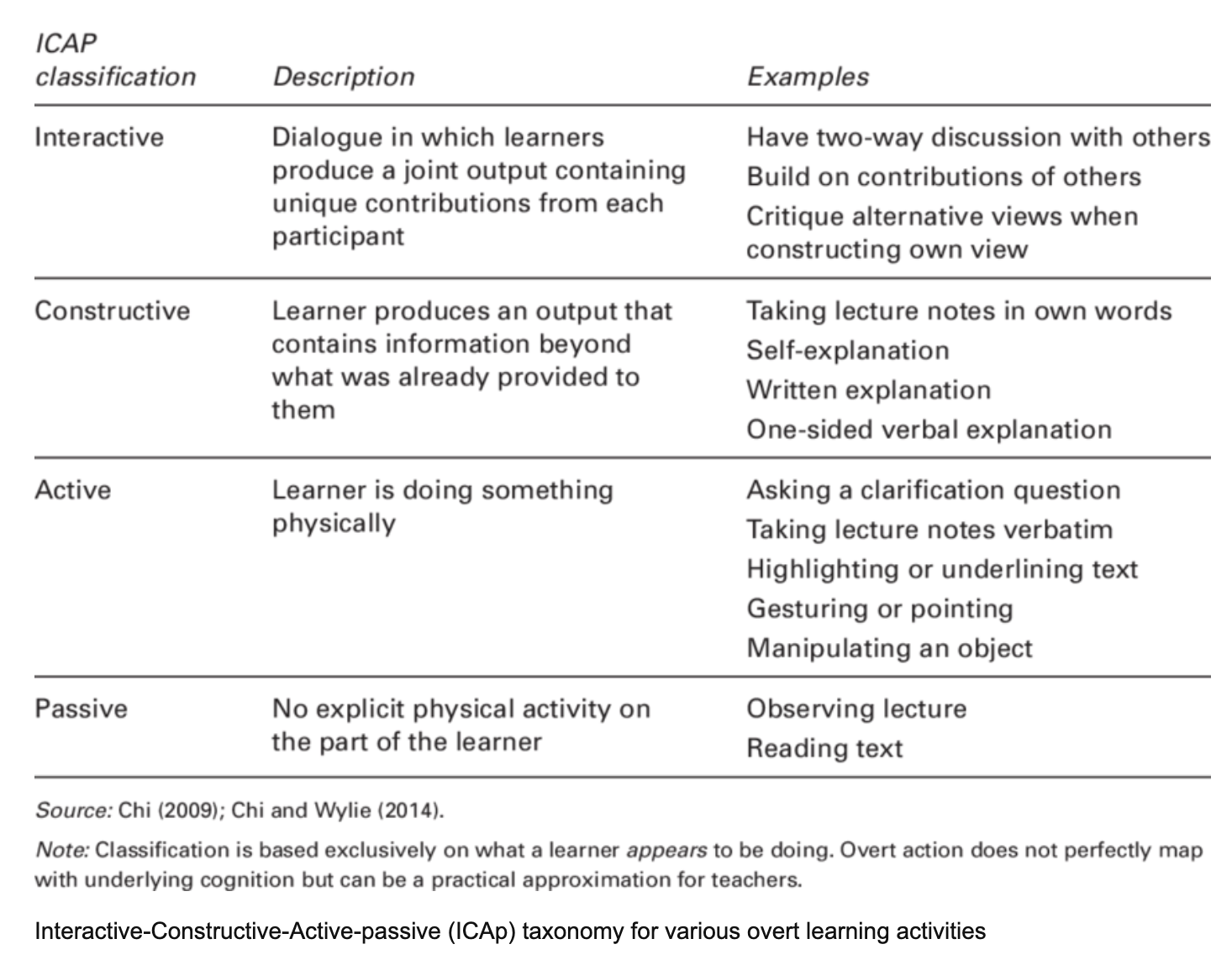
- Essentially, the hypothesis states that while learning is invisible, ==we, as teachers, can observe this, in terms how students are able to do. ==
- The hypothesis also assumes that ==cognitive engagement increases as we go from P to I.==

- The hypothesis also assumes that ==cognitive engagement increases as we go from P to I.==
# Promoting Affective Engagement
How do we promote affective engagement? We can promote affective engagement by primarily making connections to self and others. We can do this by:
- Promoting a sense of community. Provide opportunities to collaborate and connect with each other, use icebreakers to build rapport.
- Provide timely feedback and use student work as exemplars. The ==TAG feedback== is a good way for students to give feedback to their classmates.
- Connect to content and encourage self-reflection. An example of this is a framework called ==What, So, What, Now, What.== The teacher can have discussion on the event, idea or concept, connect with theory and knowledge, and ask students how this can be applied towards some action.
# Fostering Behavioral Engagement
- We can foster behavioral engagement by ==providing opportunities for participation through universal response.==
- Fisher, Fray, Bustamante & Hattie (2021) recommend formatively assessing students using Universal Response via Hand Signals, Response Cards and Polling such as the one below:
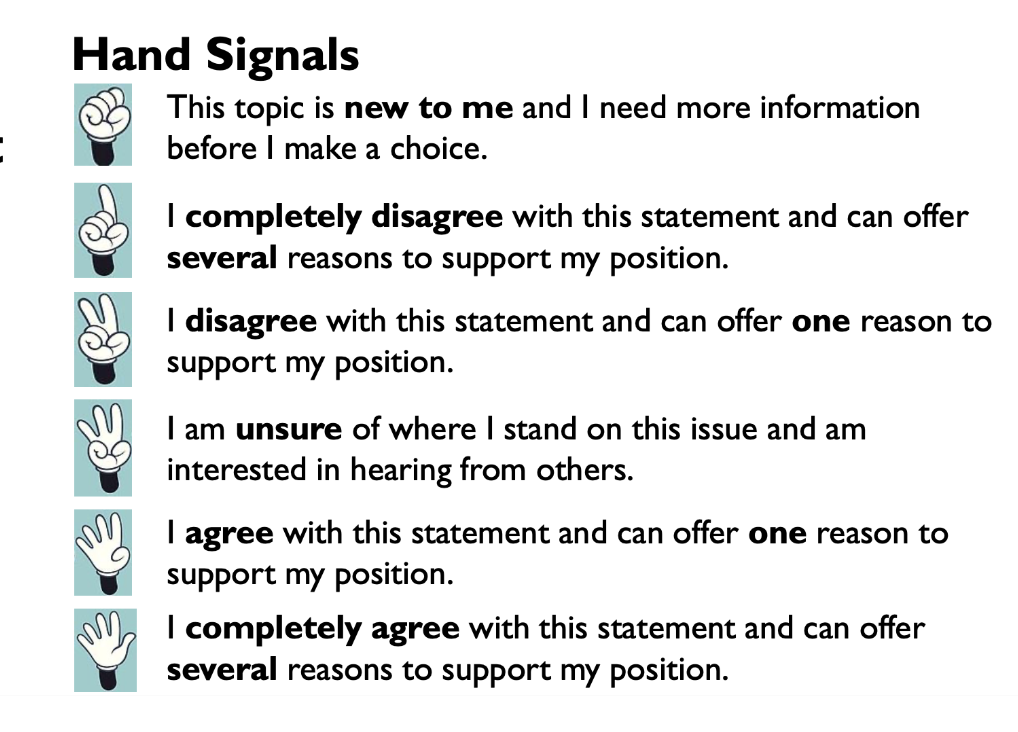
- Fisher, Fray, Bustamante & Hattie (2021) recommend formatively assessing students using Universal Response via Hand Signals, Response Cards and Polling such as the one below:
- To make participation more fun, you may also ==use response cards, or even polling.== Give a prompt and ask students to respond, through online polling or response cards. This way, you generate more responses from students, and at the same time, you also get to see if students are on track based on their responses.
# Why universal response?
According to Fisher, Frey, Bustaments & Hattie (2021):
- Universal responses offer ways for learners to engage students in the ==cognitive practices of rehearsal and retrieval.==
- Frequent universal responses promote active learning and give insight into ==what is sticking== instructional and what isn’t.
- Non verbal responses, polling and waterfall chats ensure feedback opportunities are ==extended to the entire class, not only individuals.==
# The Engagement Matrix
- So if I keep asking difficult questions, will that ensure students are engaged? If I keep implementing group activities, does that mean students are engaged? If I keep implementing universal response techniques, will that keep them engaged?
- The answer is…it depends. Because it begins with your intention.
- Stull & Mayer (2007) proposed an Engagement Matrix involving looking at the activities we implement in class in terms of ==psychological activity== and ==behavioral activity.==
- For example, an easy class quiz could generate high behavioral activity but low in psychological activity.
- A lecture could be considered as one involving low behavioral and psychological activity but inserting a challenging discussion prompt within the lecture could raise the psychological activity.
- So when planning what questions to ask, and what activities to implement, it helps to ask:
- What is your purpose for asking the question?
- Review, Summarizing;
- Deepening understanding; (Cognitive)
- Sharing Experiences & Opinions (Affective)
- What content is included in the question?
- Prior knowledge
- Prior experience
- New knowledge learned
- How should you generate responses?
- Behavioral: Universal response strategies, Cold call, collaborative tools
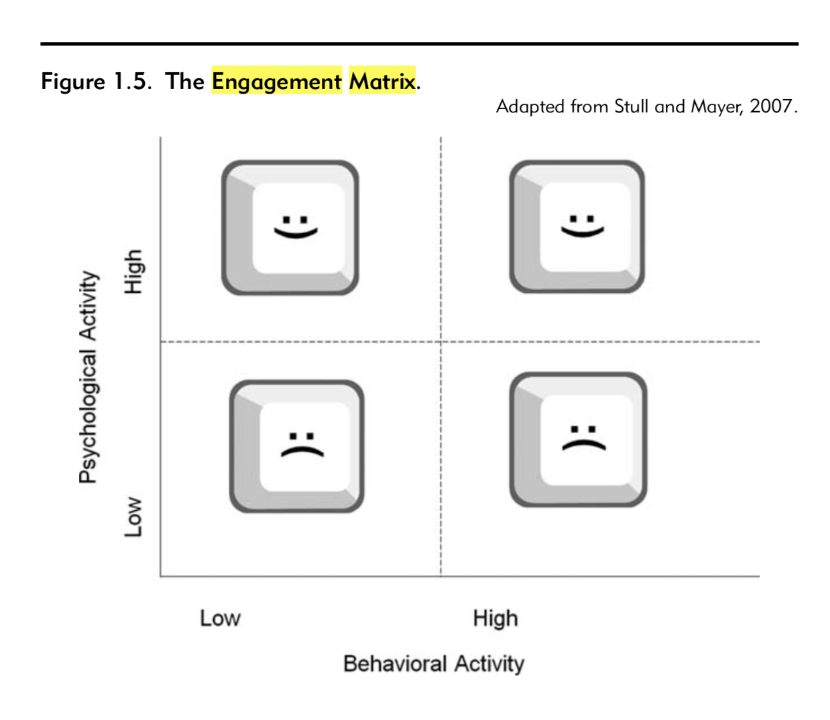
- Behavioral: Universal response strategies, Cold call, collaborative tools
- What is your purpose for asking the question?
# Using ACE Thought-Weaving Framework TO Engage
- How can ACE guide us to facilitate cognitive engagement?
- ACE stands for Activating from Context, Connect to Content and Evaluate to Validate. We can use this acronym to help us identify questions we can ask.
- Activate from Context
- Ask a question, give a prompt that helps surface anything related to the topic at hand
- E.G. Prior knowledge, Prior experience, Their current situation
- Connect to Content
- Use interesting age-appropriate examples
- Use metaphors
- Use interesting situations
- Evaluate to Validate
- Provide opportunities for practice and application.
- Provide feedback to help students realize what has changed through their learning experiences.
# Summary
- We defined engagement as having three dimensions - affective, behavioral and cognitive.
- We can promote cognitive engagement by asking questions that activate from context, connect to content and evaluate to validate.
- We can promote affective engagement by ensuring that the skills and content are connected to self and others. We can foster behavioral engagement through Universal Response.|
